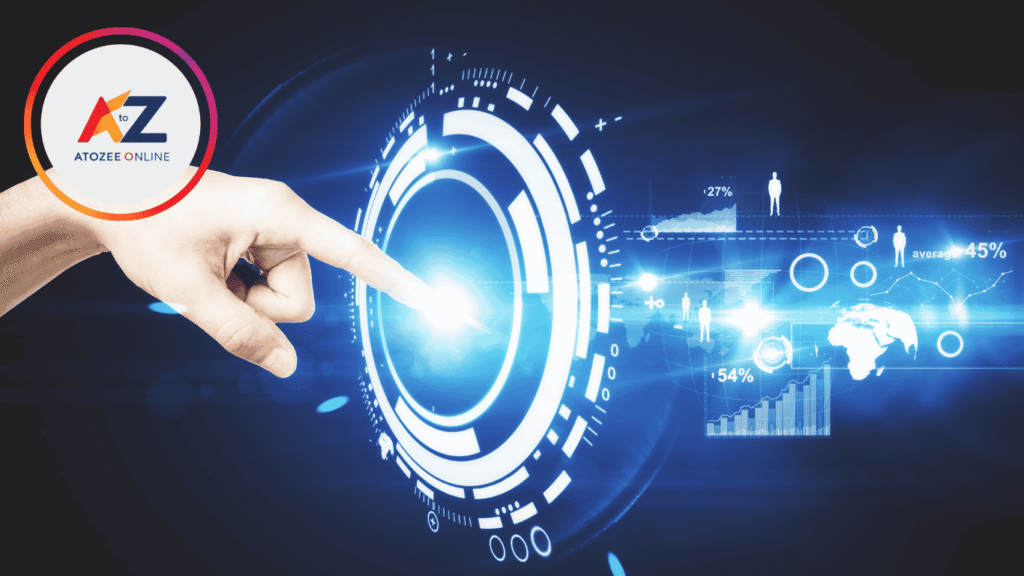Top 10 Latest Technology Trends of 2024
Introduction
In today’s fast-paced digital world, technology continues to evolve at an extraordinary rate. The year 2024 is no exception—ushering in a new wave of innovations that are set to redefine the way we work, interact, and live. From intelligent automation to decentralized systems, this year’s top technology trends are not only futuristic but also highly practical.
For businesses, staying updated with these trends means gaining a competitive edge. For individuals, it means preparing for a rapidly transforming career landscape. In this article, we’ll explore the Top 10 Latest Technology Trends of 2024, explaining how they work, why they matter, and how they are being used in real-world scenarios.
What Are the Top Technology Trends of 2024?
Technology trends refer to the major directions in which innovations are progressing, influencing industries, markets, and society. These trends often reflect the most promising advancements in computing, data processing, automation, and user interaction.
In 2024, the focus is on smarter systems, enhanced connectivity, ethical AI, and sustainable digital practices. Here’s a comprehensive look at the top 10:
Top 10 Latest Technology Trends of 2024?
Let’s explore each trend briefly to understand how it functions and what makes it impactful in 2024.
- Generative AI and Foundation Models
Generative AI (like GPT-4 and DALL·E) creates new content—text, images, music, or even code. Foundation models are large-scale AI systems trained on massive datasets that can be adapted for various tasks. These models work by learning complex patterns in data, allowing them to generate highly coherent and creative outputs. - Edge AI
Unlike traditional AI that relies on cloud computing, Edge AI processes data locally on devices (smartphones, IoT devices). This reduces latency, enhances privacy, and enables real-time decision-making. - Quantum Computing
Quantum computers use quantum bits (qubits) instead of traditional bits to process information. This allows them to perform complex calculations exponentially faster, particularly useful in cryptography, drug discovery, and logistics optimization. - Sustainable Tech
Green computing and energy-efficient systems are gaining momentum. This includes using renewable energy to power data centers, eco-friendly hardware, and software optimized for minimal energy consumption. - 5. Web 3.0 and Decentralization
Web 3.0 promotes decentralization using blockchain technology. It gives users more control over their data and facilitates peer-to-peer transactions without intermediaries. - Cybersecurity Mesh
This is a flexible security architecture that allows security tools to work together across networks. It decentralizes security perimeters, making protection more adaptive and robust. - Smart Wearables 2.0
The next generation of wearables offers advanced health monitoring, AR capabilities, and real-time biometric analytics, transforming how we interact with our bodies and environments. - Extended Reality (XR)
Combining Virtual Reality (VR), Augmented Reality (AR), and Mixed Reality (MR), XR enables immersive environments for gaming, training, and virtual meetings. - AI-Powered Automation (Hyper automation)
This goes beyond simple automation by integrating AI, RPA (Robotic Process Automation), and machine learning to automate complex business processes end-to-end. - Digital Twins
A digital twin is a virtual replica of a physical object, system, or process. It’s used for simulation, monitoring, and predictive analysis in industries like manufacturing, construction, and healthcare.
Importance and Benefits of These Tech Trends
Why Do These Trends Matter?
- Increased Efficiency: Automation and AI reduce manual tasks, increasing speed and accuracy.
- Enhanced User Experience: Technologies like XR and smart wearables personalize digital interactions.
- Greater Data Security: Cybersecurity mesh and blockchain improve protection in a hyper-connected world.
- Sustainability: Green tech reduces environmental impact.
- Scalability: Businesses can grow faster with cloud-native, decentralized systems.
- Competitive Advantage: Early adoption leads to market leadership and innovation positioning.
Common Challenges and Misconceptions
Despite their potential, these technologies come with hurdles:
Challenges:
- High Implementation Costs: Quantum computing and XR setups can be expensive.
- Data Privacy Concerns: AI and Web 3.0 raise ethical issues around data use.
- Skills Gap: There’s a shortage of experts skilled in emerging technologies.
- Regulatory Uncertainty: Governments are still catching up with tech developments, especially in blockchain and AI.
Common Misconceptions:
- “AI will replace all jobs” – While AI will transform roles, it will also create new opportunities.
- “Blockchain is only for crypto” – Its decentralized ledger is useful for supply chains, voting systems, and identity verification.
- “Quantum computing is years away” – It’s already being used in pilot programs by Google, IBM, and others.
Real-Life Examples and Use Cases
- Generative AI in Content Creation
Companies like Canva and Adobe are integrating generative AI to help users design faster. Writers use tools like ChatGPT for drafting content, saving time while maintaining quality. - Edge AI in Healthcare
Wearable health devices analyze patient data in real-time to detect irregularities like heart arrhythmias without relying on cloud connectivity. - Quantum Computing in Pharmaceuticals
Pfizer and IBM are collaborating on quantum algorithms to accelerate drug discovery, reducing time-to-market for critical treatments. - Sustainability at Data Centers
Tech giants like Google and Microsoft are powering their servers with 100% renewable energy and using AI to optimize energy usage. - Cybersecurity Mesh for Remote Work
Enterprises like Cisco implement cybersecurity mesh to protect a globally distributed workforce, ensuring consistent security across devices and networks. - Web 3.0 in Digital Identity
Startups like Civic are creating blockchain-based ID systems where users control who accesses their personal information.
Conclusion
The technology landscape in 2024 is brimming with possibilities. From AI that writes and designs to quantum computers that solve the unsolvable, innovation is reshaping the boundaries of what’s possible. Understanding and leveraging these top trends isn’t just for tech giants—it’s essential for any business or individual aiming to stay relevant in the digital age.
To make the most of these advancements:
- Stay informed.
- Invest in skill development.
- Experiment with emerging tools and platforms.
- Think ethically and sustainably.
The future is being built today. Embracing these top technology trends is the key to unlocking it.


